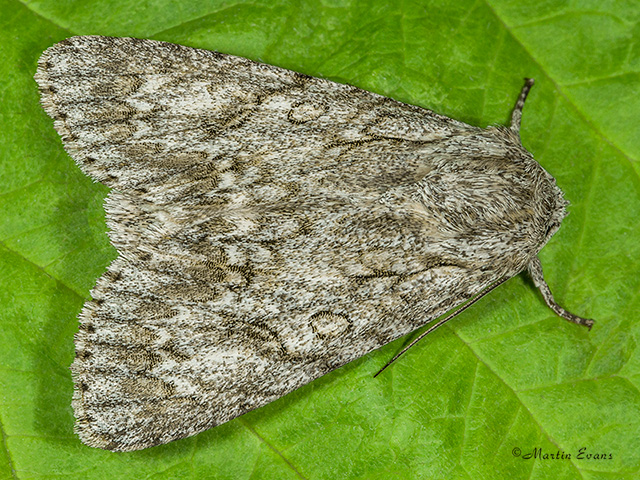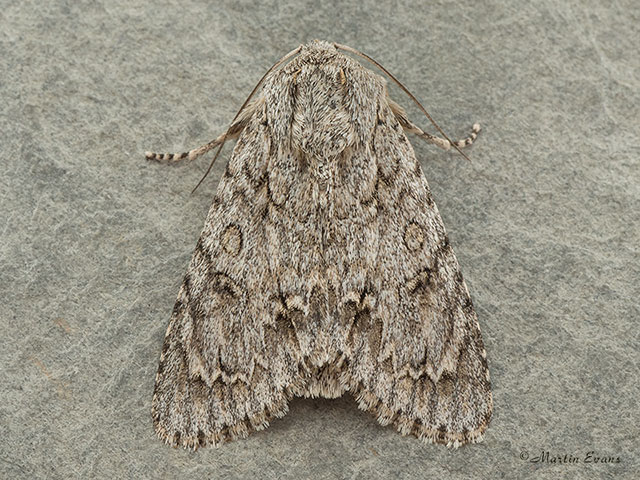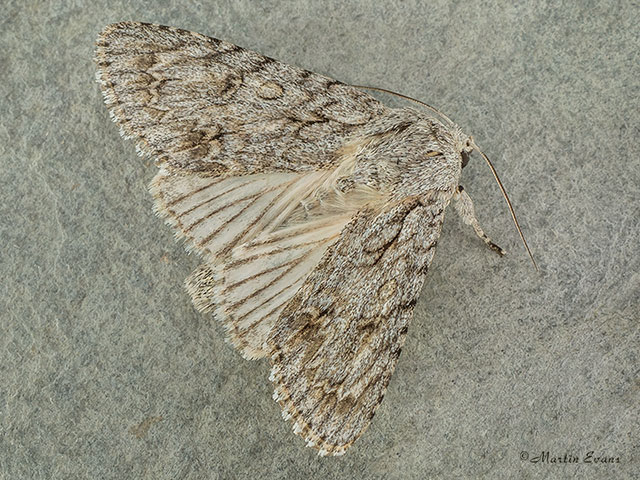Noctuidae
73.039 Sycamore Acronicta aceris (Linnaeus, 1758)
Local
Similar species: The most frequent pale form is unlikely to be mistaken for other British or Irish moths, but the dark form that has become dominant in some areas could be mistaken for Poplar Grey Subacronicta megacephala which is on average smaller (17 to 20mm), more mottled and has a large pale patch to the outside of the kidney mark.
Forewing: 18 to 22mm
Habitats: It commonly inhabits parkland and gardens, but is also found in deciduous woodland and scrub.
Habits: The moth is occasionally found during the day at rest on fence posts and tree trunks. It flies from dusk when it nectars at flowers and visits sugar. It later comes to light.
Foodplant: The larva feeds on Horse Chestnut (a preference), Sycamore, Field Maple, London Plane, oaks, birches, plums, roses, Laburnum and other deciduous trees and shrubs. It pupates in double-layered cocoon in a bark crevice, under moss or in the leaf litter, sometimes overwintering for more than one winter.
On the European mainland it has also been recorded feeding on Norway Maple, poplars, willows, elms and occasionally limes.




